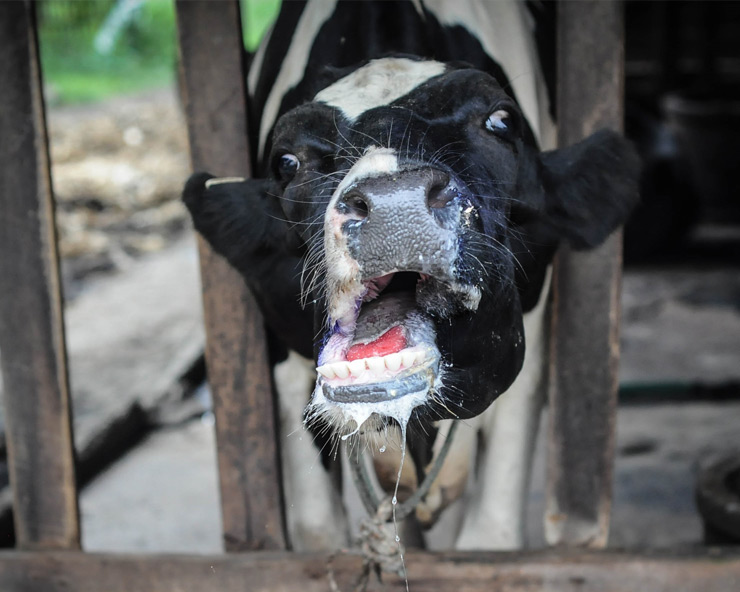If you have ever traveled abroad, upon arrival back in the U.S., there are several questions you have to answer. “While you were traveling, did you visit any farms?” is one of them. A separate screening is often required if your answer is yes. Along with the prohibition of bringing fresh produce, meats, and cheeses into the U.S, These are safeguards to prevent diseases from entering the U.S. Some animal diseases around the world are not found on U.S. soil. These are known as foreign animal diseases or FADs. Several agencies and many people work within the U.S. to help keep foreign animal diseases such as high path avian influenza (HPAI) and African swine fever (ASF) out. Foot and Mouth Disease (FMD) was last in the U.S. in 1929, and we hope it never returns.
What is FMD?
Foot and Mouth Disease is a virus that causes blisters and sores on animals’ mouths, feet, and teats. It spreads extremely fast through herds and to neighboring farms. This is due to its ability to quickly transfer from one animal to another through direct contact, aerosol, or indirectly through items that have been contaminated with the virus. While the disease often does not cause animal death, its ability to spread poses a considerable threat to our livestock population and economics.
How can I tell if my animals have FMD?
Infected animals often have areas of redness or blisters around or in their mouth, along the line where their hoof meets the hair on their leg, between their toes, or on the teats. Animals in your herd may show signs of lameness or be seen laying down more than expected due to sore feet. Left over feed in bunks and a drop in milk production or rate of gain may be noticed due to lowered feed intake because it hurts to eat. Occasionally animals may have fevers or discharge from their nose, or drool from their mouth. Livestock can recover from the virus but usually causes death in younger animals.
Can I get FMD?
The virus mainly affects cloven-hooved animals, such as pigs, goats, sheep, and cattle. People may get a mild form of blisters in rare instances, but FMD is not seen as a public health concern.
How can I make sure my animals don’t become infected with FMD?
As with other diseases, practicing reasonable disease prevention measures can help prevent your animals from becoming infected. Keeping track of who visits your farm and what areas they can access is a great place to start. If visitors have recently traveled outside the U.S. or have been around animals showing signs of illness, it’s best to have them come back another day. Keeping your facilities clean and well maintained can decrease the spread of germs on your farm. Taking a few moments each day to look at your animals for signs of an illness can be critical to finding a problem early. More information can be found about disease monitoring and disease prevention at these links.
What should I do if I think my animals may have FMD?
If your animals show any signs or blisters on their mouth or feet, it is best to notify your local veterinarian or extension agent immediately. Since this disease isn’t currently found in the United States, we must take quick action at any sign of an outbreak. Still have questions about who or what to report? Check out our animal disease reporting infographic for more information.
What would happen if FMD got into the U.S.?
FMD entering the United States would have detrimental effects on our livestock population and our trade relations and economy. The U.S. has developed a plan in the event FMD was to make it onto our soil. While we won’t know exactly how it will play out until it happens, the end goal would be to eliminate the virus from all animals. This would be done by stopping animal movements, quarantining farms, possibly humanely euthanizing animals, and potentially using FMD vaccines. However, with the help of producers of all susceptible species, we can do our best to keep FMD out.
Where can I find more information?
Fast Facts Disease Summary, CFSPH
FMD World Organization for Animal Health (OIE)
FMD Factsheet for Livestock Specialists, CFSPH
FMD Pocket Guide: Swine Bovine CFSPH
Foot and Mouth Disease, USDA

